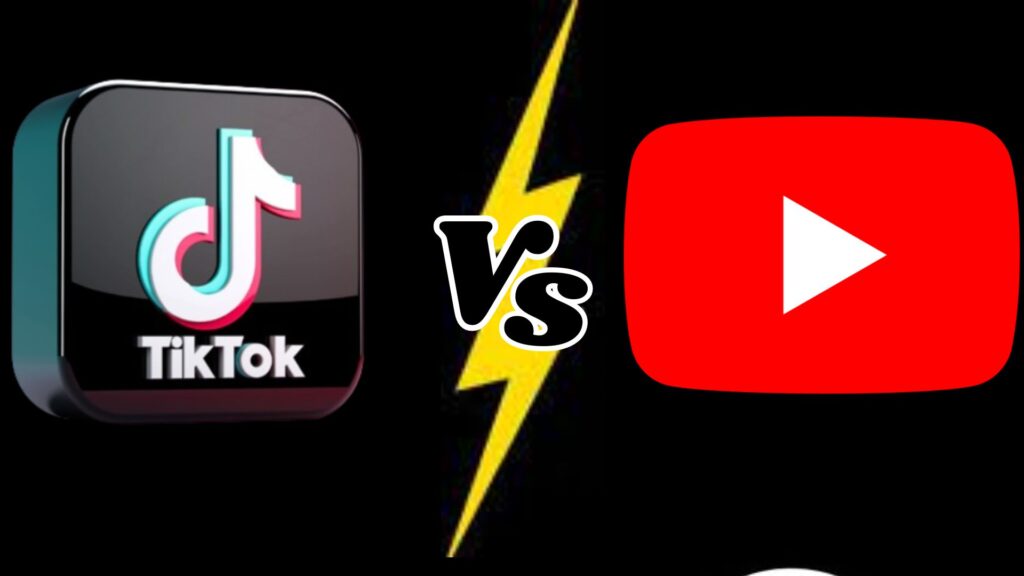In the dynamic world of social media, TikTok vs YouTube stand as behemoths, each boasting billions of users worldwide. TikTok burst onto the scene in 2016, captivating audiences with its addictive short-form video format and algorithm-driven feed. Its emphasis on creativity and virality has made it a global sensation, particularly among younger demographics. On the other hand, YouTube, the pioneer of online video platforms, has been a dominant force since its inception in 2005. With its vast array of content spanning from tutorials to vlogs to music videos, YouTube appeals to a broad audience of all ages. As these two giants continue to shape the digital landscape, the battle between TikTok and YouTube intensifies, with each platform vying for user attention, engagement, and influence. In this article, we delve into the intricacies of TikTok vs YouTube, exploring their content diversity, audience engagement, monetization opportunities, and more, to determine which platform holds the crown in this epic showdown.
Understanding TikTok and YouTube
TikTok, the viral sensation, burst onto the scene in 2016, captivating users with its short-form video format. It quickly became a global phenomenon, especially among Gen Z users, with its addictive algorithm and emphasis on creativity. On the other hand, YouTube, the OG of online video platforms, has been dominating since its inception in 2005. With its vast library of content ranging from tutorials to vlogs to music videos, YouTube appeals to a broad audience spanning different demographics.
Content Diversity and Format
One of the primary distinctions TikTok vs YouTube lies in their content formats. TikTok specializes in bite-sized videos, typically lasting between 15 to 60 seconds, fostering quick consumption and easy sharing. Its content ranges from lip-syncing and dance challenges to comedy sketches and DIY tutorials. YouTube, on the contrary, offers longer-form content, allowing creators to delve deeper into topics with videos ranging from a few minutes to several hours. This facilitates in-depth tutorials, product reviews, documentaries, and more.
Audience Engagement and Interaction
TikTok’s algorithm is renowned for its ability to tailor content to users’ preferences, creating a personalized feed that keeps them hooked for hours. Its emphasis on user-generated content encourages active participation, with features like duets and challenges fostering community engagement. YouTube, while lacking the same real-time interaction features, compensates with comments sections, likes, and shares, enabling creators to connect with their audience and receive feedback.
Monetization Opportunities
Both TikTok and YouTube offer monetization opportunities for creators, albeit through different mechanisms. TikTok’s Creator Fund allows popular creators to earn money based on views, engagement, and followers. Additionally, sponsored content and brand partnerships are prevalent on the platform. YouTube, on the other hand, offers multiple avenues for monetization, including ad revenue, channel memberships, Super Chats during live streams, merchandise shelf, and sponsored content.
Influence and Reach
TikTok’s explosive growth has propelled many of its creators to stardom, with influencers amassing millions of followers and gaining widespread recognition. Its algorithmic nature provides equal opportunity for content to go viral, allowing even relatively unknown creators to garner significant attention overnight. YouTube, with its established creator ecosystem, boasts numerous influencers with loyal fanbases and extensive reach. However, breaking into the YouTube scene often requires consistency, quality, and strategic SEO tactics.
Educational and Entertainment Value
Both TikTok and YouTube offer a blend of educational and entertainment content, catering to diverse interests and preferences. TikTok excels in providing quick, digestible tutorials and hacks across various fields, from cooking to fitness to language learning. Its entertainment value lies in its addictive nature, with endless streams of entertaining videos catering to every mood. YouTube, with its longer-form content, serves as a treasure trove of educational resources, offering in-depth tutorials, lectures, documentaries, and thought-provoking discussions.
Privacy and Safety Concerns
With their massive user bases, TikTok vs YouTube face scrutiny regarding privacy and safety issues. TikTok, owned by the Chinese company ByteDance, has come under fire for data privacy concerns and potential censorship. YouTube, owned by Google, faces challenges related to content moderation, including the spread of misinformation, harmful content, and cyberbullying. Both platforms have implemented measures to address these concerns, such as content moderation policies, age restrictions, and privacy controls.
See Also – Latest Technology in Gaming
Conclusion
In the battle of TikTok vs YouTube, there’s no clear winner. Each platform offers unique features, content formats, and opportunities for creators and users alike. TikTok reigns supreme in short-form, viral content, while YouTube dominates in long-form, educational resources. Ultimately, the choice TikTok vs YouTube boils down to individual preferences, objectives, and content consumption habits. Whether you’re seeking quick entertainment or in-depth knowledge, both platforms have something to offer in the vast realm of social media.

